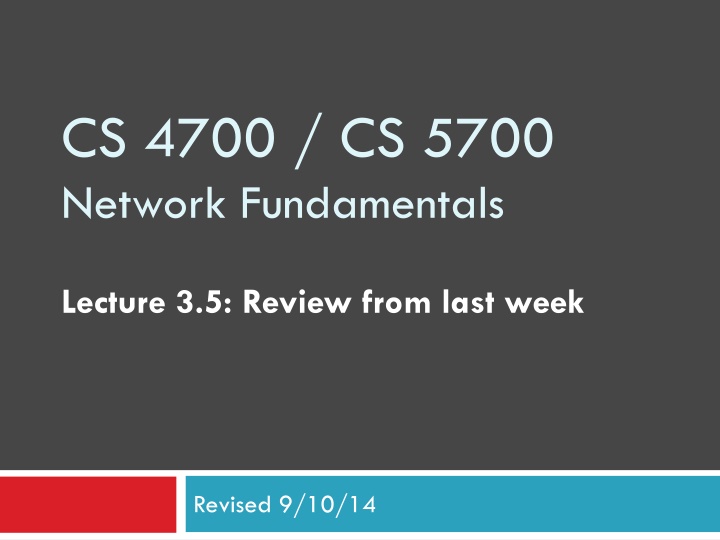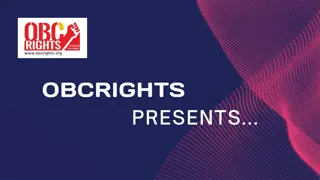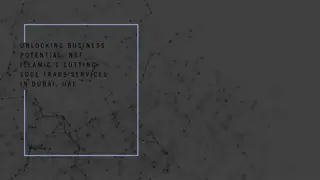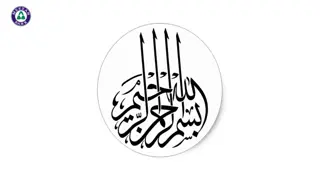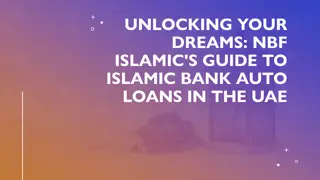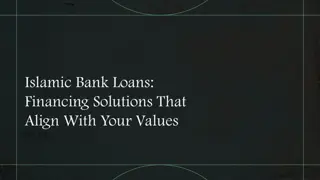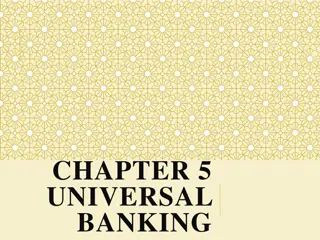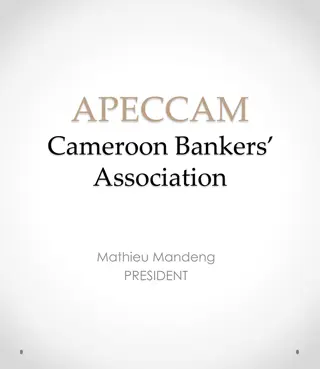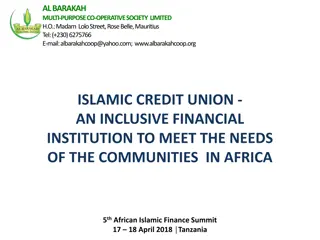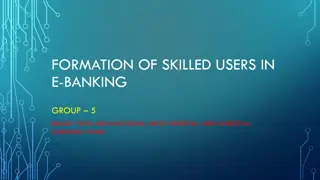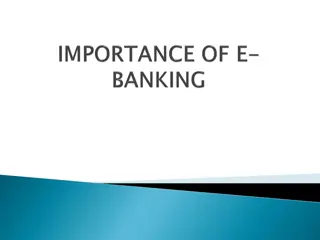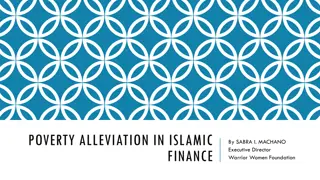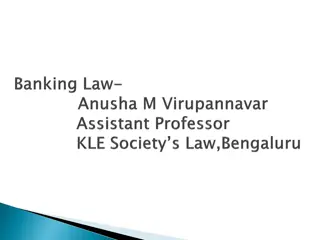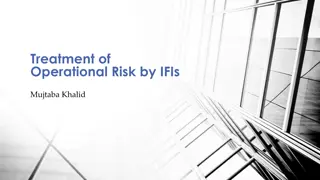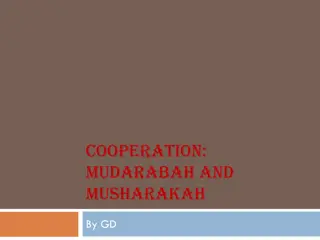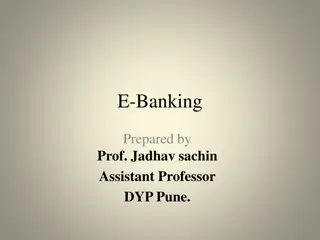Role of IRTI in Islamic Economics, Banking & Finance
Islamic Research & Training Institute (IRTI), a member of the Islamic Development Bank Group, plays a vital role in promoting research and training in Islamic economics, banking, and finance. Established in 1981, IRTI operates as the research and training arm of IDB, supporting the development of Shari'a-compliant financial instruments and fostering cooperation among Islamic financial institutions through its internet-based Information System (IBIS). With a focus on maintaining financial databases and providing valuable information services, IRTI aims to serve analysts, researchers, academicians, and other stakeholders in the global Islamic financial industry
Download Presentation

Please find below an Image/Link to download the presentation.
The content on the website is provided AS IS for your information and personal use only. It may not be sold, licensed, or shared on other websites without obtaining consent from the author.If you encounter any issues during the download, it is possible that the publisher has removed the file from their server.
You are allowed to download the files provided on this website for personal or commercial use, subject to the condition that they are used lawfully. All files are the property of their respective owners.
The content on the website is provided AS IS for your information and personal use only. It may not be sold, licensed, or shared on other websites without obtaining consent from the author.
E N D
Presentation Transcript
CS 4700 / CS 5700 Network Fundamentals Lecture 3.5: Review from last week Revised 9/10/14
Intro to the class 2 Use Piazza for everything Really Unless it s something truly personal/private Don t cheat I will catch you If you have questions about what is cheating, ask Regrading policy 2 strikes and you re out Partners allowed on all projects
History of the Internet 3 What were the newideas that revolutionized/distinguished the Internet from other prior networks? Packet switching (why is this a good thing?) No global control Layering to glue together different network types What was the original Internet called? What was its design goal? ARPANET, resilient to catastrophic failure (nuclear) What do you think is the biggest threat to Internet success?
Architecture 4 What are the 7 ISO layers? Which ones are used in practice? What does each layer specify? How do we combine layers in data transmission? What are examples of violations of strict layering?
Saltzers paper 5 Design principle, not a law Low-level functionality begets assumptions, and when you assume, you More generally: Systems will fail with some nonzero probability. The Internet is a very large computer system, so something is almost always going to fail. Defining endpoint is critical Some endpoints are at the low level
Student comments 6 Strengths Good concrete examples Argument in principle is sound Can apply to a wide range of topics Weaknesses Only loose guidance for when to apply the argument Where s the data? What is the end in today s complex networks?
Clarks paper 7 Primary goal: Multiplexed use of existing (disparate) communication networks, separately administered Secondary goals: Priority order shaped the Internet Make it work now, worry about accounting later (but make it cheap to build) Keep it simple, but know that it might be less efficient
Student comments 8 Strengths Pretty clear writing from the horse s mouth Some interesting architectural tidbits Weaknesses Written in 1988 ( before I was born ) Where is security? Were the priorities right ?
Project 1 highlights 9 Key skills Work with TCP sockets (optionally SSL) Follow application-layer protocol Parse data Use turnin script from (most) any CCS department server It s a valid CCS server if you can read /course/cs5700f14/bin You can work in teams Use any language you want (doesn t have to be C) Document your code, read instructions carefully! Get started early. I go to bed early.
